- 1300 007 308
- info@ridapest.com.au
- Open 24 hours, 7 Days a week
Understanding Australian Spiders: A Comprehensive Guide
Back to BlogTable of Contents
Introduction: A World of Eight-Legged Wonders
Australia, a land known for its diverse fauna, is home to an incredible array of spiders. From the urban dwellers lurking in the corners of our homes to the skilled hunters of the outdoors, these eight-legged Creatures can evoke curiosity, awe, and fear, but what do we really know about these enigmatic inhabitants of our land?
In this guide, we’ll explore the world of Australian spiders, including various species, characteristics, and debunking myths. Whether you’re fascinated by web-weaving or concerned about venomous threats, this article will equip you with the knowledge to coexist with these arachnids.
At Ridapest Termite & Pest Control, we believe in embracing the natural world while ensuring safety and comfort. Join us as we delve into the rich tapestry of Australia’s spider diversity!

Australian House Spiders
Australia’s rich and diverse ecosystem is home to various species of spiders. One prominent kind is the Australian House Spider, a common occupant in homes across the nation.
Australian House Spiders: A Common Presence
Australian House Spiders are a common sight in many homes and gardens throughout the country. While they may seem daunting at first glance, these creatures are relatively harmless.
Appearance: They are usually brown or black, with a robust body and thick legs. Their presence can be a nuisance but is usually not a cause for concern.
Habitat: Preferring dark and secluded spots, you’ll often find them in corners, crevices, and garden sheds.
Behavior: While not aggressive, they do bite if threatened, causing minor discomfort but no severe health risks.
These spiders do indeed serve a purpose in our ecosystem by controlling the population of other insects. Here’s a quick glance at their characteristics:
| Characteristic | Description |
|---|---|
| Size | 1.5cm to 3cm |
| Color | Brown or black |
| Habitat | Corners, crevices, garden sheds |
| Diet | Insects |
While they might not be the most welcome guests in your home, they’re typically not something to fear. For those who find them discomforting, professional spider control services, such as those offered by Ridapest Termite & Pest Control, can help in safely managing and eradicating these spiders.
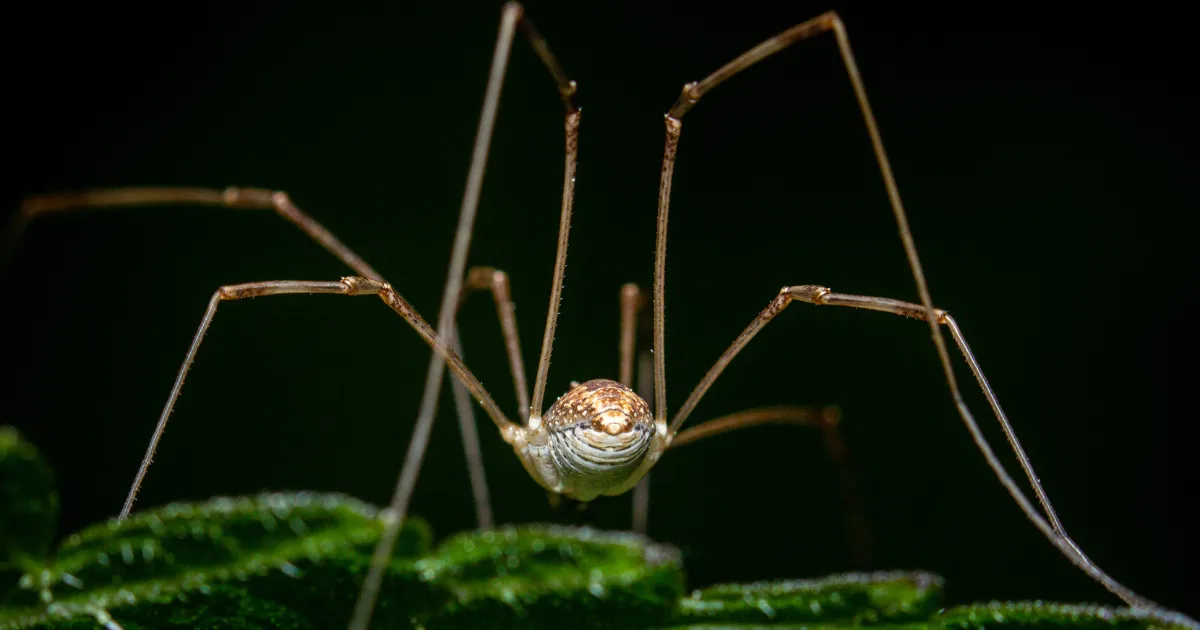
Daddy-long-legs
The Daddy-long-legs spider is another household name in Australia, often misunderstood and subject to many myths.
Daddy-long-legs: The Harmless Guest
Unlike their intimidating appearance, Daddy-long-legs spiders are not venomous to humans. Their famous long legs make them easily recognizable and unique.
Appearance: Long, slender legs that can be up to 30 times the length of their body.
Habitat: Typically found in houses, garages, and gardens.
Behavior: They feed on other spiders and insects, making them helpful in pest control.
Daddy-long-legs are known for the following characteristics:
- Non-Venomous: Despite popular belief, they are not harmful to humans.
- Beneficial Predators: They feed on other pests, aiding in natural pest control.
- Distinct Appearance: Their long legs are their defining feature.
If you ever come across these spiders at home and need them removed, you can always rely on professional services like Ridapest.
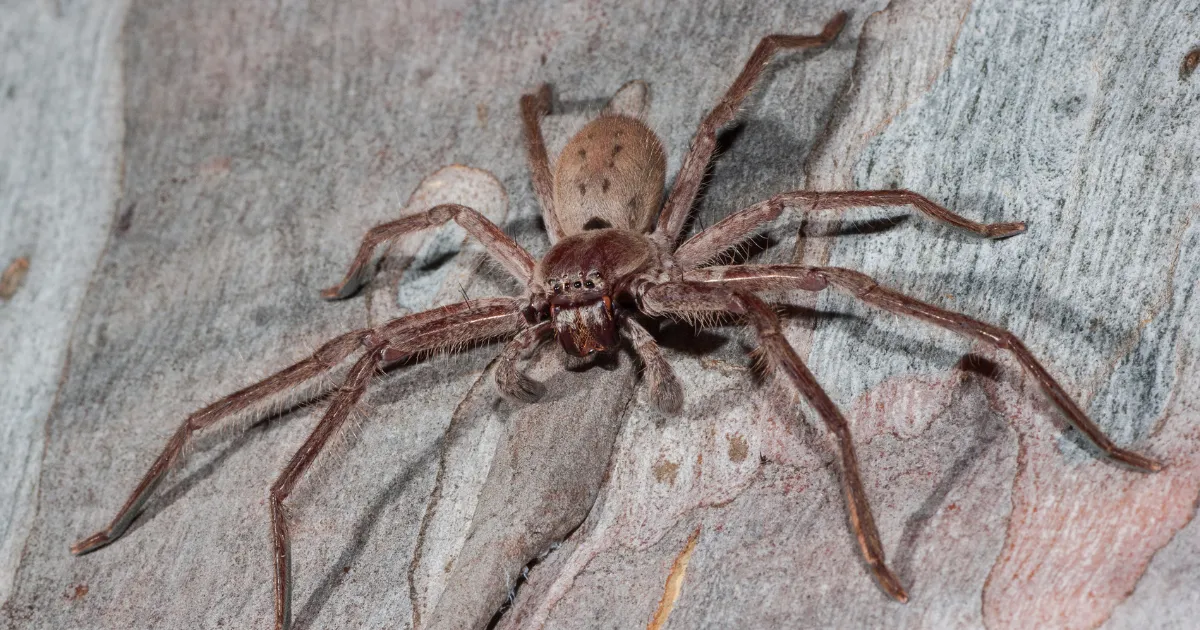
Huntsman Spiders
The Huntsman Spider is a name that may send chills down the spine of many Australians, but they’re generally more of a help than a hindrance.
Huntsman Spiders: The Gentle Giants
Large and fast, Huntsman Spiders might appear terrifying, but they are generally non-aggressive and beneficial in controlling pests.
Appearance: Large, flat-bodied spiders with legs that can span up to 15cm.
Habitat: Commonly found in bark, under stones, or even inside vehicles.
Behavior: They are nocturnal and hunt for insects and other small prey.
Here’s what makes Huntsman Spiders unique:
- Size: They are one of Australia’s largest spiders.
- Speed: Known for their rapid movements.
- Beneficial: They help in controlling insect populations.
If the presence of Huntsman Spiders is causing discomfort in your home, Ridapest Termite & Pest Control in Cairns is well-equipped to handle the situation professionally and safely.
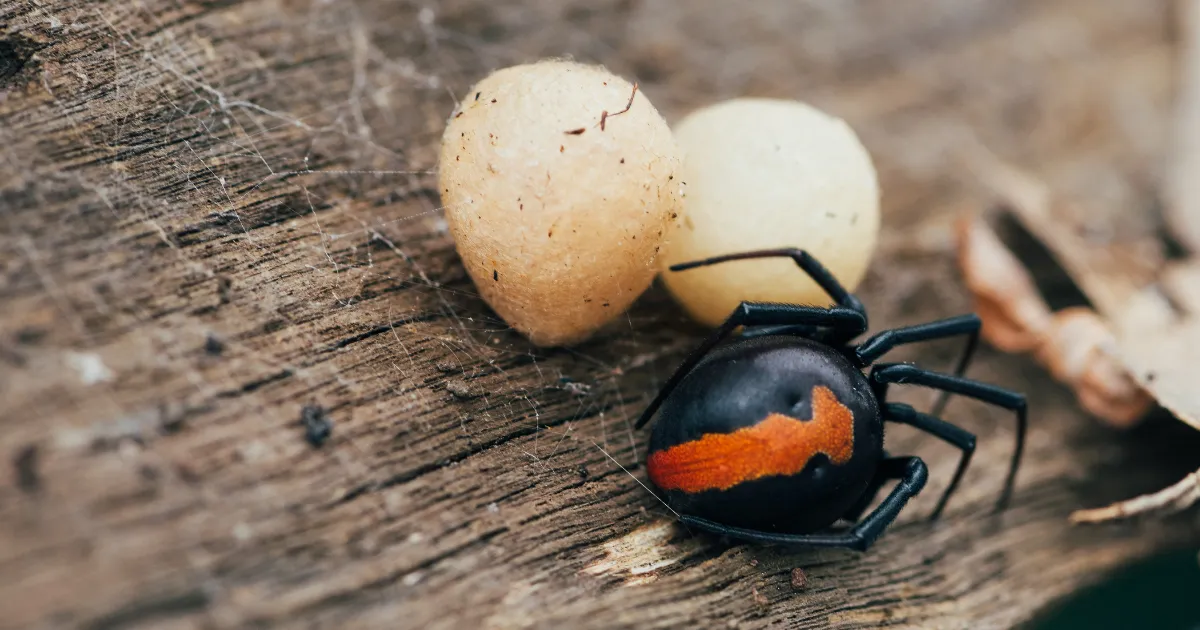
Redback Spiders
Redback Spiders are one of Australia’s most famous venomous spiders. Though small in size, they are infamous for their potent venom.
Redback Spiders: Small but Deadly
Their distinctive red stripe on the back is a clear identifier, warning of their venomous nature.
Appearance: Usually black with a red stripe on the upper side of the abdomen.
Habitat: They prefer outdoor settings, like sheds, mailboxes, or under seats.
Behavior: Generally non-aggressive, but their bites can cause severe pain and require medical treatment.
Here’s a snapshot of Redback Spiders:
| Characteristic | Description |
|---|---|
| Size | 1cm to 3cm (females) |
| Color | Black with red or orange mark |
| Habitat | Outdoors, secluded spaces |
| Venom | Potent, medical attention required |
In the event of a Redback Spider infestation, trust the experts at Ridapest Termite & Pest Control to handle the situation with the utmost care and professionalism.
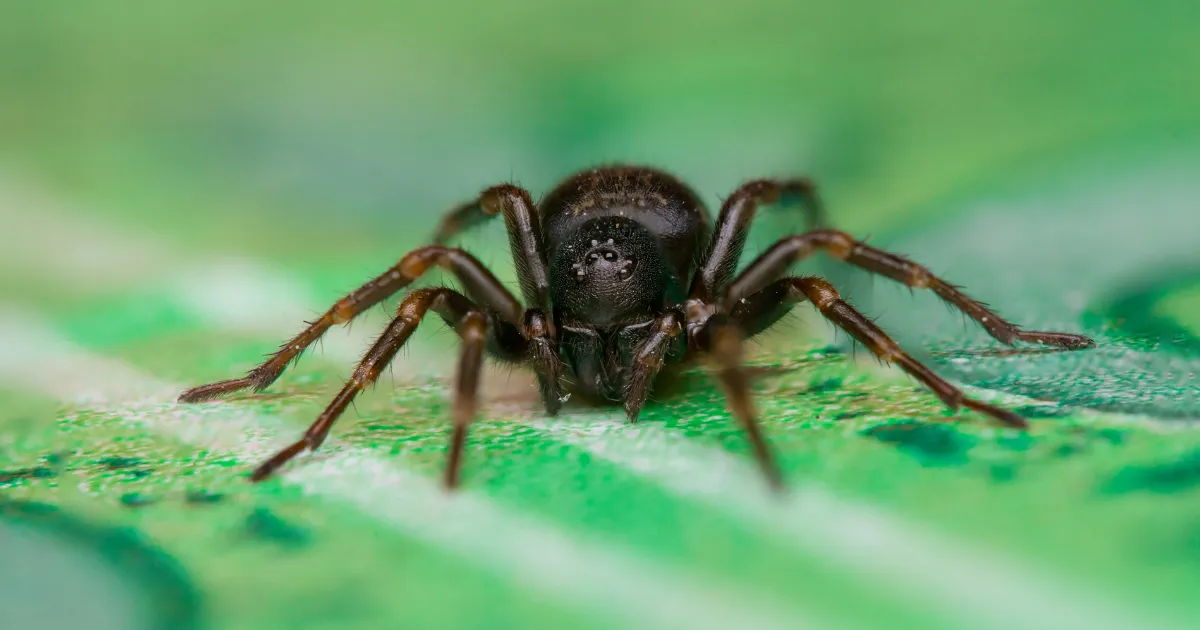
Black House Spiders
Black House Spiders are commonly found in Australian homes. Though their appearance may be startling, they are not as threatening as they seem.
Black House Spiders: Fearsome but Harmless
These spiders are typically found building their tangled webs in window frames and corners.
Appearance: Dark brown to black, with a velvet texture.
Habitat: Houses, window frames, under eaves.
Behavior: Mostly shy, bites are rare and usually not harmful to humans.
Characteristics of Black House Spiders:
- Web Weavers: Recognizable by their tangled webs.
- Predators: They feed on insects, helping control pests.
- Non-Aggressive: Rarely bite and are not dangerous to humans.
Professional control is available with services like Ridapest, specialized in managing these creatures effectively.

Cupboard Spider (aka Brown House Spider)
The Cupboard Spider, also known as the Brown House Spider, is a common find in Australian homes.
Cupboard Spider: A Common Indoor Resident
Though similar in appearance to the Redback Spider, they are far less harmful.
Appearance: Brown with a red or orange hue, often confused with Redback Spiders.
Habitat: Found in cupboards, under sinks, and in dark, secluded spaces.
Behavior: Timid, bites are uncommon and not medically significant.
Here’s an overview:
- Size: Around 1cm in length.
- Color Variations: Range from brown to dark orange.
- Habitat Preferences: Cupboards, dark indoor spaces.
- Bite: Not harmful but may cause mild discomfort.
If you come across Cupboard Spiders and wish them removed, Ridapest Termite & Pest Control offers the perfect solution.

White-tailed Spiders
White-tailed Spiders are frequently spotted in Australian homes and are often a cause of concern due to misconceptions about their bites.
White-tailed Spiders: Debunking the Myths
These spiders get their name from the white tip on their tails, and their bite is often feared, but rarely dangerous.
Appearance: Grey to dark brown, with a distinctive white tip on the tail.
Habitat: Found in homes, especially in bedrooms, living rooms, and bathrooms.
Behavior: Night hunters, they prey on other spiders.
Here’s a brief insight:
| Characteristic | Description |
|---|---|
| Size | 1.5cm to 2cm |
| Color | Dark with a white tail tip |
| Habitat | Indoors |
| Bite | Mild pain, but no necrotic effects |
Worried about White-tailed Spiders in your home? Ridapest Termite & Pest Control can handle it with ease.
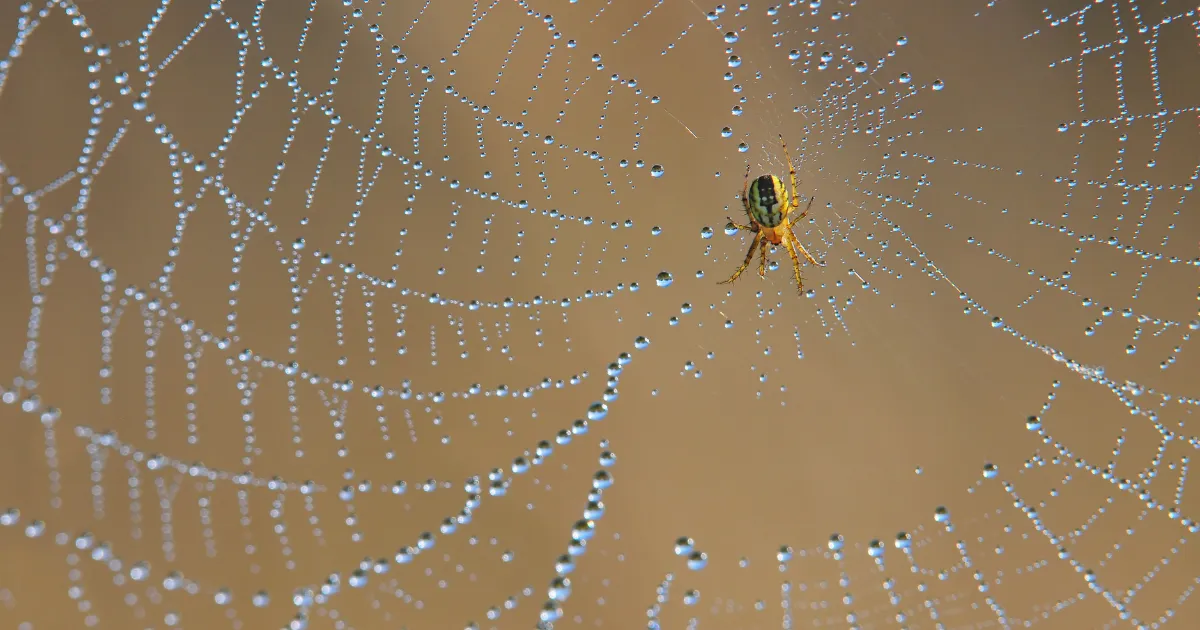
Outdoor Spiders
Australia’s great outdoors is home to various spider species, each playing a vital role in the ecosystem.
Outdoor Spiders: Nature’s Pest Controllers
From forests to gardens, outdoor spiders are natural predators for many insects.
Common Types: Orb Weavers, Trapdoor Spiders, Garden Spiders.
Habitat: Gardens, forests, grasslands.
Behavior: Many spin intricate webs to capture prey.
Here’s a list of benefits from these outdoor dwellers:
- Natural Pest Control: They help keep insect populations in check.
- Ecosystem Balance: Play an essential role in the food chain.
- Architectural Wonders: Some create beautiful, intricate webs.
Outdoor spiders usually don’t pose a threat to humans, but if you find them intrusive in your garden, professional pest control services can manage them.
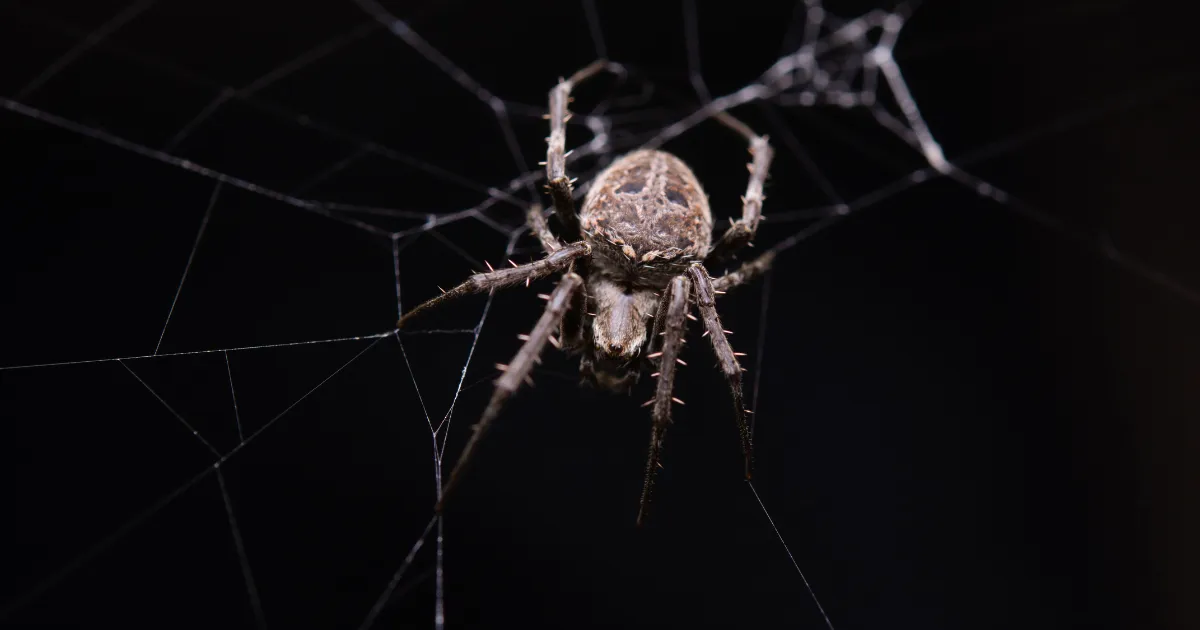
Garden Orb Weaving Spiders
The Garden Orb Weaving Spiders are known for their incredible web-spinning skills and are a common sight in Australian gardens.
Garden Orb Weaving Spiders: Masters of the Web
These spiders are famous for weaving large, intricate webs that are often spotted glistening in the morning dew.
Appearance: Varies greatly in color and size.
Habitat: Gardens, parks, and outdoor spaces.
Behavior: Passive and rarely bite, they rebuild their webs nightly.
Key features of Garden Orb Weaving Spiders:
- Amazing Webs: Known for large, orb-shaped webs.
- Nighttime Builders: Webs are built fresh each night.
- Beneficial: They catch a wide variety of flying insects.
If their presence becomes overwhelming in your garden, Ridapest Termite & Pest Control is always at your service to manage them professionally.

Australian Wolf Spiders
The Australian Wolf Spiders are unique hunters, roaming the ground rather than spinning webs, and they’re an essential part of the natural balance.
Australian Wolf Spiders: The Ground Hunters
These spiders are named after their wolf-like hunting tactics, stalking and pouncing on their prey.
Appearance: Brownish with patterns that help them blend into the surroundings.
Habitat: Gardens, bushlands, sandy shores.
Behavior: Nocturnal hunters, they often carry their young on their backs.
A quick look at their features:
| Characteristic | Description |
|---|---|
| Size | Up to 3cm |
| Color | Brown with patterns |
| Habitat | Ground dwelling |
| Diet | Insects, other spiders |
Though they might appear frightening, Australian Wolf Spiders are usually harmless to humans. If they become a concern in your area, Ridapest Termite & Pest Control is here to help.

Saint Andrew’s Cross Spider
Known for the characteristic cross-shaped pattern they weave into their webs, Saint Andrew’s Cross Spiders are another fascinating Australian native.
Saint Andrew’s Cross Spider: The Cross Weaver
These spiders are often seen in gardens and bushlands, and their unique webs are their defining feature.
Appearance: Yellow and black stripes on their abdomen.
Habitat: Gardens, grasslands, bushy areas.
Behavior: Daytime web builders, they rest in the center of their web.
Here’s why they’re fascinating:
- Cross Pattern Webs: They weave a bright zig-zag pattern in their webs.
- Harmless to Humans: They rarely bite, and their venom is not dangerous.
- Attractive Appearance: Striking colors make them easily recognizable.
Professional pest control services can manage them if needed, maintaining the balance between nature and human comfort.

Big Black Spiders
Big Black Spiders are not a specific species, but a general term for various large, dark-colored spiders found across Australia.
Big Black Spiders: A General Term
These spiders often invoke fear due to their size and color, but they are mostly harmless.
Common Types: Funnel Web Spiders, Trapdoor Spiders, some Huntsman Spiders.
Habitat: Ranges from indoors to gardens and forests.
Behavior: Varies greatly depending on the species.
Some key aspects to know:
- Not Always Dangerous: Despite their size, many are harmless.
- Identification is Key: Knowing the exact species helps in handling them.
- Professional Control: If in doubt, professional services like Ridapest Termite & Pest Control can properly identify and manage them.
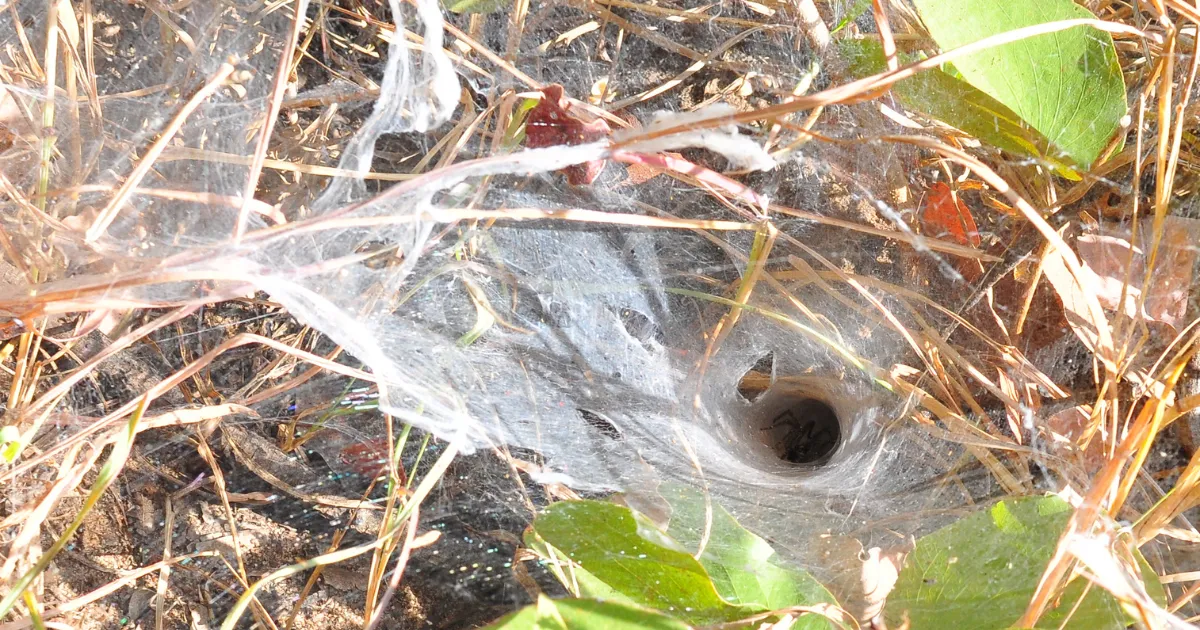
Funnel Web Spider
The Funnel Web Spider, known for its distinctive web shape and potent venom, is one of Australia’s most notorious spiders.
Funnel Web Spider: Australia’s Most Venomous
Their fangs and venom have caused fear, but understanding them can reduce unnecessary panic.
Appearance: Black or dark brown, shiny, and heavily built.
Habitat: Forests, gardens, and sometimes homes.
Behavior: Aggressive when threatened, with venom that can be lethal to humans.
Here’s a summary:
| Characteristic | Description |
|---|---|
| Size | 1cm to 5cm |
| Color | Black or dark brown |
| Habitat | Damp, shaded areas |
| Venom | Highly toxic, medical attention required |
If you encounter a Funnel Web Spider, it’s best to contact a professional pest control service like Ridapest Termite & Pest Control immediately.
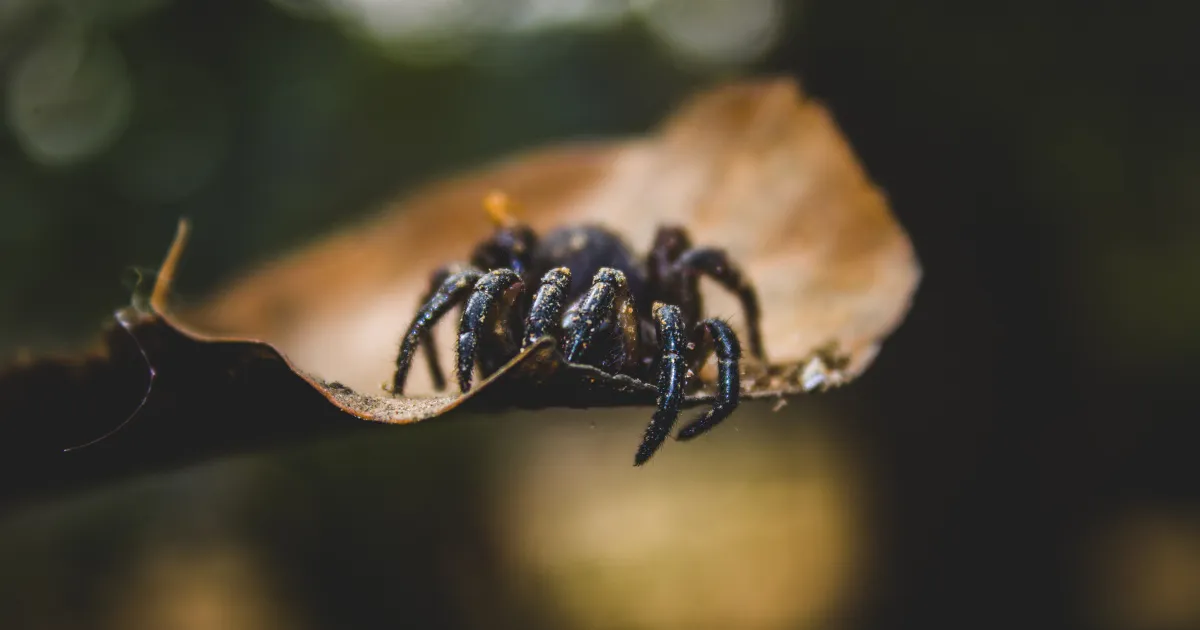
Trapdoor Spider
Trapdoor Spiders are remarkable architects, creating camouflaged burrows with a hidden “trapdoor.”
Trapdoor Spider: Masters of Camouflage
These shy spiders are more interesting than dangerous and are usually found in gardens.
Appearance: Brown, often with a thick and stocky build.
Habitat: Underground burrows with a camouflaged lid.
Behavior: Rarely leave their burrows and are not aggressive.
Some interesting facts:
- Burrow Builders: They construct burrows with hinged lids.
- Patient Predators: Wait for prey to approach the burrow.
- Harmless: Their bites are non-threatening to humans.
For professional management, Ridapest offers expert solutions.
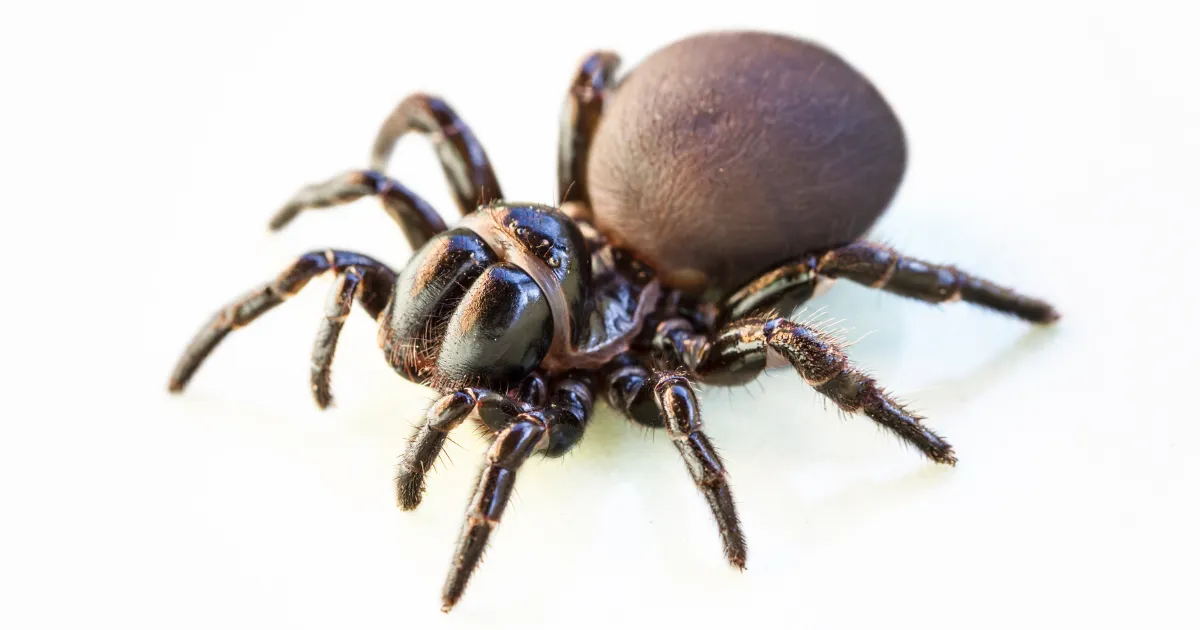
Mouse Spiders
Mouse Spiders are often confused with Funnel Web Spiders, but they’re less aggressive and their venom is not as dangerous.
Mouse Spiders: Often Misunderstood
These spiders are solitary and nocturnal, and they rarely come into contact with humans.
Appearance: Dark and glossy with robust bodies.
Habitat: Burrows, similar to Trapdoor Spiders but without a lid.
Behavior: Mostly found in gardens, away from human activity.
Key points to remember:
- Size: 1cm to 3cm in body length.
- Venom: Can cause pain, but not as toxic as Funnel Web Spiders.
- Control: If needed, professional services like Ridapest Termite & Pest Control are available.
Conclusion: Embracing Australia’s Spider Diversity
Australia’s spider population is a diverse and intriguing group of creatures that play vital roles in our ecosystem. From the cunning and fierce Funnel Web Spider to the architectural marvel of the Trapdoor Spider, understanding these species is key to coexisting with them.
A Closer Look at Australia’s Spiders
Here’s a brief recap of the amazing spiders we’ve explored:
- Australian House Spiders: Common indoor dwellers, mostly harmless.
- Daddy-long-legs: Famous for their slender legs, pose no threat.
- Huntsman Spiders: Agile hunters, beneficial for pest control.
- Redback Spiders: Recognizable by their red stripe, venomous but rarely fatal.
- Cupboard Spider (aka Brown House Spider): Often found indoors, bites can be painful.
- White-tailed Spiders: Misunderstood, bites are less severe than rumored.
- Outdoor Spiders: Nature’s pest controllers, vital for ecosystem balance.
- Garden Orb Weaving Spiders: Artistic web weavers, commonly found in gardens.
- Australian Wolf Spiders: Ground hunters, fascinating parental behavior.
- Saint Andrew’s Cross Spider: Known for their cross-pattern webs, harmless to humans.
- Big Black Spiders: A general term, often harmless and misunderstood.
- Funnel Web Spider: Australia’s most venomous, professional handling needed.
- Trapdoor Spider: Masters of camouflage, non-aggressive.
- Mouse Spiders: Often confused with Funnel Webs, less toxic.
Living with Spiders
Understanding and respecting these creatures can lead to a harmonious relationship. However, when their presence becomes a concern or poses a potential threat, professional intervention might be necessary.
Ridapest Termite & Pest Control in Cairns provides specialised services to identify, manage, and control any spider-related issues in your home or garden. With a team of trained professionals, Ridapest ensures safe and effective solutions tailored to your specific needs.
Did you enjoy this post? Make sure to check out our blog post about the most common pests in Cairns or check out our blog post about Australian Fleas!
Frequently Asked Questions
What is the diversity of Australian spiders like?
Australia boasts a wide array of spider species, each with its unique characteristics. From the common Australian House Spider to the elusive Funnel Web Spider, our land is home to an intriguing mix of arachnids that contribute to the country’s rich ecosystem.
Are Australian House Spiders harmful?
While Australian House Spiders might seem intimidating, they are generally harmless to humans. These spiders prefer dark and secluded spaces and can often be found in corners, crevices, and garden sheds. Although they might bite if threatened, their bites typically result in minor discomfort without serious health risks.
What’s the deal with Daddy-long-legs spiders?
Daddy-long-legs spiders, with their distinctive long legs, are often misunderstood. Contrary to popular belief, they are not venomous to humans. These spiders are beneficial predators, feeding on other pests, which makes them valuable for natural pest control.
Tell me more about Huntsman Spiders.
Huntsman Spiders, known for their large size and swift movements, are generally non-aggressive and can actually be helpful in controlling pest populations. While they might look intimidating, their presence is mostly beneficial. These spiders are nocturnal and can often be found in bark, under stones, or even inside vehicles.
What’s the scoop on Redback Spiders?
Redback Spiders, with their distinctive red stripe, are one of Australia’s most famous venomous spiders. While they are generally non-aggressive, their bites can cause severe pain and might require medical attention. It’s important to be cautious around areas where these spiders are commonly found, such as sheds, mailboxes, and under seats.
Are Black House Spiders dangerous?
Black House Spiders, commonly found in Australian homes, are not as threatening as their appearance might suggest. While their tangled webs might be startling, they are mostly shy and bites are rare and generally not harmful to humans. These spiders play a role in controlling insect populations.
What’s the deal with Cupboard Spiders?
Cupboard Spiders, also known as Brown House Spiders, are often found in cupboards, under sinks, and in dark spaces. While they might resemble Redback Spiders, they are less harmful. Their bites are uncommon and not medically significant, causing only mild discomfort in most cases.
ow do White-tailed Spiders fit into the mix?
White-tailed Spiders, often a cause of concern due to misconceptions about their bites, are generally less dangerous than rumoured. Their bites might cause mild pain, but they don’t have necrotic effects. It’s important to know that these spiders are not as harmful as they are sometimes thought to be.
What role do outdoor spiders play?
Outdoor spiders, found in various environments like gardens and forests, serve as natural pest controllers. They play an essential role in maintaining the balance of the ecosystem by controlling insect populations. From Orb Weavers to Trapdoor Spiders, these outdoor dwellers are essential components of nature’s intricate web.
How about Garden Orb Weaving Spiders?
Garden Orb Weaving Spiders are known for their intricate web-spinning skills. Found commonly in Australian gardens, these spiders create beautiful, orb-shaped webs that help them catch flying insects. While their webs might be awe-inspiring, these spiders are mostly harmless and beneficial for maintaining a healthy garden.

Or Mathias
Passionate owner of Ridapest Termite & Pest Control in Cairns, Australia, leveraging over five years of industry experience to provide pet and family-friendly pest control solutions. Known for his dedication to customer satisfaction and environmental safety, Or has grown Ridapest into a leading service, setting new standards in pest control while keeping homes and businesses safe.
